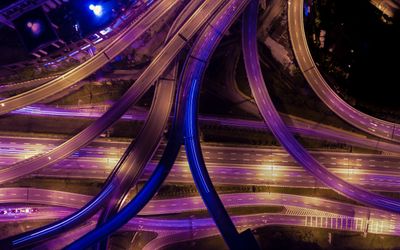Open-Source Wood Solar Photovoltaic Racking
A low-cost, fixed-tilt and open-source photovoltaic rack made up of wood for solar panels.
Technical Specifications
| Main Material | Wood (any accessible) |
| Concrete for Posts | 30 MPa Quikrete concrete |
| Tilt angle | Depends on location |
| London, Ontario: 34 degrees | |
| Lomé, Togo: 10 degrees | |
| Solar Panel | 400WLG 400WNeON2 BiFacial Solar Panel |
| Size: 1m x 2m | |
| Front load: 5400 Pa | |
| Rear load: 4000 Pa | |
| Ground clearance | 500 mm |
| Wind tolerance | 80 mph winds |
| Holes | Diameter: 250 mm |
| Depth: 1.2 m | |
| Total Installation Time Spent | 7.5 h |
Overview
This tech spec was submitted by Joshua Pearce as part of the University Technology Exposure Program.
Problem / Solution
Given its excellent ecological balance, solar photovoltaic (PV) technology, an established and popular sustainable energy source, is viewed as a naturally distributed renewable energy source. Although PV systems have evident lifelong economic advantages, such as significantly cutting electric utility bills, they are expensive for many consumers in developed and developing nations. To address this issue, one option is to begin small and employ plug-and-play solar, in which users use microinverters to connect PV modules directly to residential circuits. Despite being inexpensive, tiny solar photovoltaic (PV) systems still present a high cost per watt ($/W) due to racking expenses.
A DIY PV design upholds the promise of small-scale plug-and-play solar. The paper developed a DIY PV rack design that meets the following criteria: (1) made from locally-accessible renewable materials, (2) 25-year lifetime to match PV warranties, (3) ability to be made by average consumers, (4) ability to meet Canadian structural building codes, (5) low cost, and (6) that it is shared using an open-source license. The open-source wood-based fixed-tilt ground-mounted bifacial photovoltaic rack design is fitted throughout North America. The PV rack offered enables customers to manufacture it through distributed means, supporting a circular bioeconomy and enabling fair access to solar energy.
Design
The study develops a plug-and-play PV rack that can power a 1 kW small system, making solar energy more affordable and available to a wider range of people. The 400WLG 400WNeON2 BiFacial Solar Panel is chosen for its capacity to improve electricity generation and snow clearing on the front to take advantage of the bifacial PV rear surface solar absorption. The designed racking system is appropriate for bifacial PV, but it can also be applied to other kinds of solar modules. Any rigid frame module can be replaced with bifacial modules to reduce system costs, especially in areas where rear reflection or snow clearing are not necessary. Additionally, it's critical to confirm that the module's front and rear load capacities are higher than the design load. Furthermore, it is determined that 1 m x 2 m is the ideal size for an LG 400 W NeON2 module. Since the specifications in the assembly instructions will be scaled up or down depending on the needs of the module, if a different dimension is utilized. To ensure that it applies to everyone, the racking is designed to be ground-mounted and to have 500 mm of ground clearance to prevent blocking snow slide-off even in the harshest northern regions.
A tilt angle of 34 degrees is used for London, Ontario, and 10 degrees for Lomé, Togo. The London racking system must be able to manage ordinary snow loads, and both systems are designed to withstand winds of 80 mph. The aforementioned conditions were chosen since it was found that if the system could handle them, it could handle any load in less demanding environments. Furthermore, the Canada and Togo systems are regarded as the two extreme cases applied in a region with a high latitude and close to the equator. As a result, the price of a system installed anywhere in the world falls about in between these two scenarios. Any of these systems' production costs will also be influenced by the region's lumber prices, wind and snow loads, and other environmental factors.
Design Analysis Assumptions
A case study approach is used in this paper to compute and incorporate snow, wind, dead loads, and structural analyses. To carry out structural analysis, common assumptions are made. These cautious assumptions guarantee that the structure won't collapse accidentally. To recreate the worst-case flexural load, the structural analysis uses loads that act perpendicular to the face of the modules. Furthermore, because joist hangers and brackets still permit rotations, the members are built as pins joined with no set end moments. Since snow accumulation on snow is essentially nonexistent, the wind load and snow load are applied to the surfaces of the modules. Since the modules have a length to span ratio of 2, they are idealized as one slab. Additionally, the module has an LG NeON 2 system from Quebec's Volts Energies. The modules can withstand front loads of up to 5400 Pa and back loads of up to 4000 Pa. Due to the design loads being far lower than the stated conditions, the modules have adequate structural capacity.
Limitations
The design consists of buried wood posts approved for below-ground use, while the upper structure is approved for ground contact or below. A higher grade implies that the wood carries more preservatives, which also means that it will cost more. For the wood solar rack to endure a lifetime, it is also vital to treat it properly and adhere to the manufacturer's instructions. This treatment is manually applying a 2 percent copper naphthenate solution to exposed board cuts and drilled holes. If the installation is in a higher zone for wood deterioration, further care must be taken. Concrete or any other form of ground-rated mixture may be used for the system's footings, but it must have a minimum compressive strength of 30 MPA. Further, a compressive strength of 20 MPa is required in areas with minimal freeze-thaw cycles. Use water to cement ratio of 0.7 rather than the standard ratio of 0.55 to make a mix with a 20 MPa strength. To guarantee that the mix has the permitted internal stress, the air content should not be higher than 8%. The necessary compressive strength made it possible to use different types of building materials. To guarantee a lifetime of 25 years, it is necessary to make sure that the hardware used in the system is either hot-dipped, galvanized, electro galvanized, or stainless steel.
References
A research paper describing the challenge, design, and outcome of the research.








